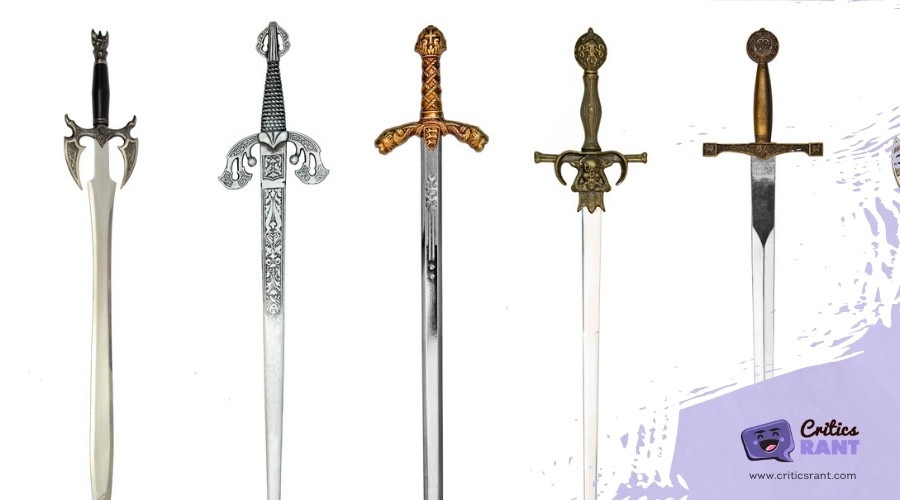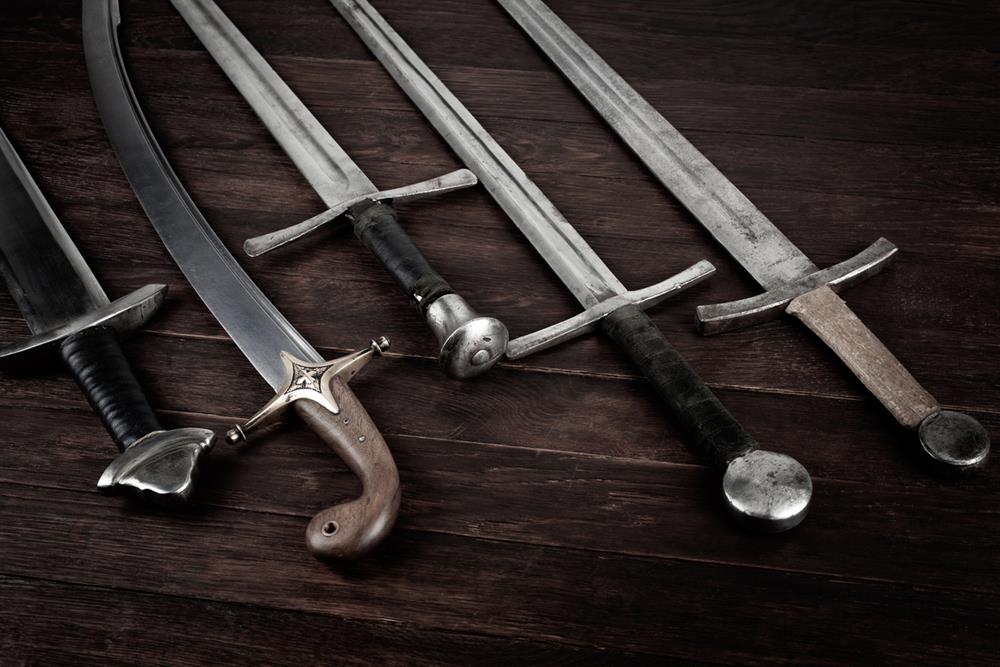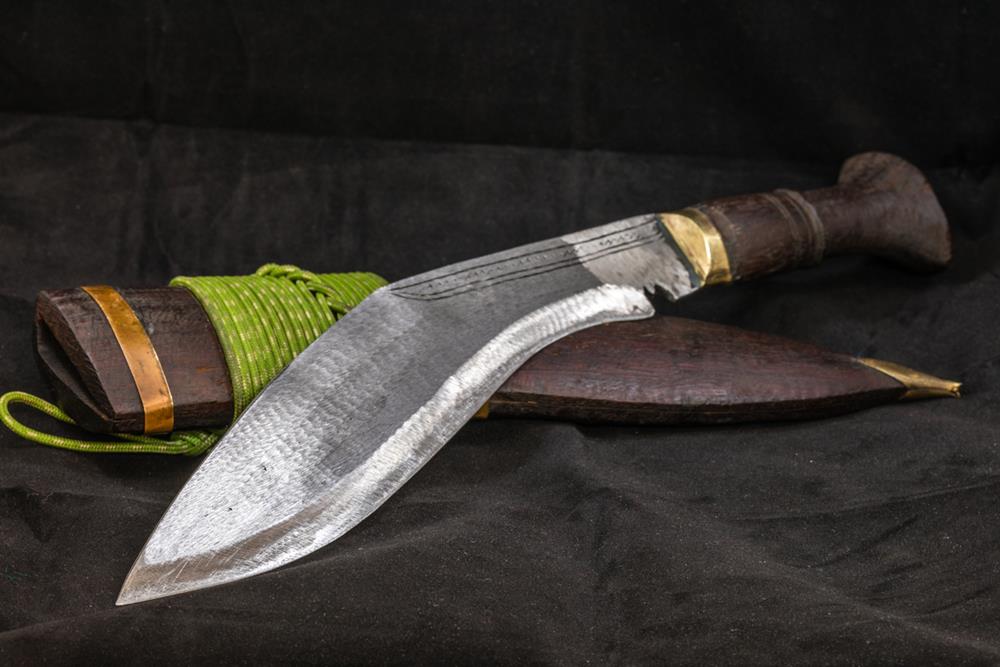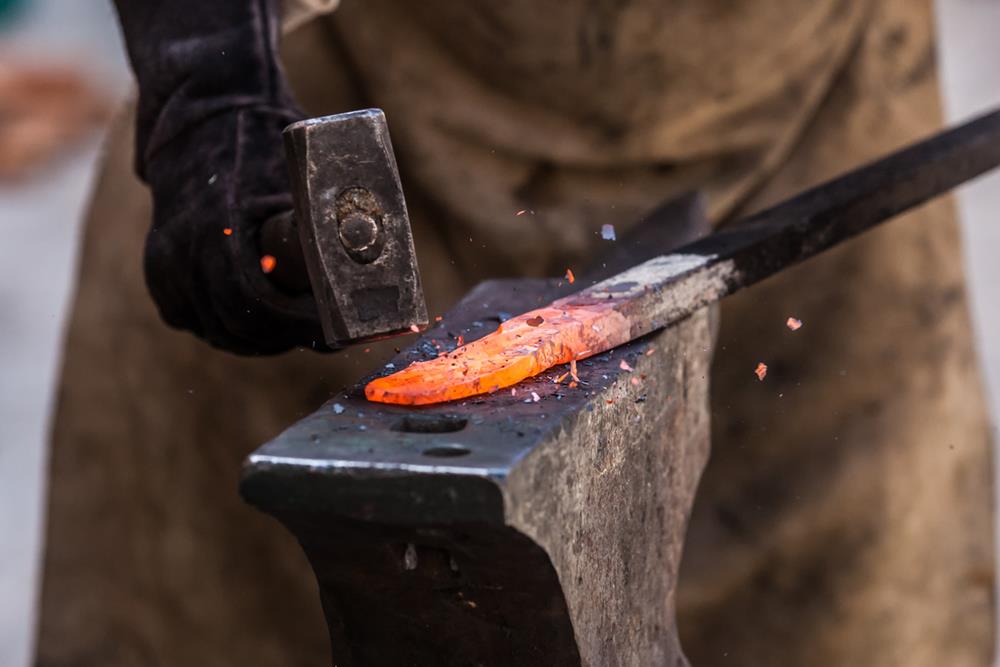From ancient times to today, swords have been a symbol of power, art, and technology. People all around the world have created many types of swords, each with its own design and purpose. Some were made for fighting in wars, while others were for ceremonies or just to show off.
In this guide, we’ll take a journey through the world of swords. We’ll look at the different kinds of swords that have existed throughout history and across different cultures. From the sharp and curved katana of Japan to the sturdy and reliable longsword of medieval Europe, we’ll explore what makes each type unique. Whether you’re a history buff, a collector, or just curious, there’s something fascinating about the world of swords waiting for you. Let’s dive in and uncover the stories these blades have to tell.
Early History of Swords
The story of the sword begins over 3,000 years ago. These early swords were not the gleaming, sharp blades we imagine today. They were born during the Bronze Age, a time when humans first learned to mix copper and tin to make bronze—a metal stronger than anything they had before. The earliest swords were short, not much longer than a large knife, and were as much a tool as they were a weapon.
Evolution Through the Ages
As time went on, the making of swords evolved with advancements in metalworking. The Iron Age brought about a revolution in sword manufacture. Iron, more abundant and harder than bronze, allowed for longer, more durable swords. These iron swords could hold a sharper edge and were less likely to bend or break in battle. This era saw the birth of many iconic sword designs that would lay the foundation for future generations.
The Sword Spreads Across Cultures
The spread of sword-making techniques across different civilizations led to a rich diversity in sword designs. In Europe, the Celts crafted long, ornate swords that were as beautiful as they were functional. Meanwhile, in Asia, distinct sword-making traditions emerged, such as the forging of the renowned Chinese Jian, a double-edged straight sword known for its balance and grace.
Swords and Society
Throughout ancient history, swords were more than just weapons; they were symbols of power and status. In many cultures, only the elite warriors and nobles could carry swords, marking them as figures of authority and respect. The craftsmanship of swords also reflected the artistic and technological capabilities of a civilization, showcasing the skill and knowledge of their makers.
Categories of Swords
Swords can be categorized in many ways, reflecting their rich diversity and the broad spectrum of cultures that forged them. To navigate the vast world of swords, it’s helpful to look at them through different lenses, such as their geographical origins, intended use, and design features. Here’s an overview of some key categories that help classify these fascinating weapons.
Based on Geographical Origins
- Eastern Swords: This category encompasses blades from countries like Japan, China, and India. Each of these cultures developed unique sword types that reflected their individual martial traditions, aesthetics, and technological advancements. For example, the Japanese katana is renowned for its curved blade and sharpness, which are designed for swift, precise cuts. The Chinese Jian, on the other hand, is a straight, double-edged sword valued for its balance and versatility. Meanwhile, the Indian talwar showcases a distinctive curved blade that excels in slashing.
- Western Swords: Swords from European and Mediterranean origins fall into this category. The European longsword, with its double-edged blade and cruciform hilt, was a staple of medieval knights. The Roman gladius, a short, stabbing sword, was designed for close-quarters combat, exemplifying the practicality of Roman military tactics. Each type within this category reflects the diverse combat styles and technological developments of Western cultures.
Based on Usage
- Combat Swords: Designed for the rigors of battle, these swords vary widely in shape and size, tailored to specific fighting styles and military needs. From the nimble rapier, favored in duels for its precision and agility, to the broadsword, prized for its brute strength in clashing with armor, combat swords are as varied as the conflicts they were forged for.
- Ceremonial Swords: Not all swords were made for battle. Ceremonial swords are crafted more for their aesthetic value and symbolic significance than for fighting. Often adorned with intricate designs, jewels, and inscriptions, these swords serve as symbols of authority, honor, and status.
- Decorative Swords: Similar to ceremonial swords but often lacking historical or cultural significance, decorative swords are made primarily for display. These swords may mimic the styles of combat or ceremonial blades but are not intended for practical use.
By Design Features
- Single-Edged Swords: This design feature includes swords like the katana, saber, and scimitar, which have one sharp edge. The shape and curvature of these swords can vary significantly, but they are generally optimized for slashing and chopping motions.
- Double-Edged Swords: Swords with two sharpened edges, such as the longsword and the Jian, fall into this category. These swords are versatile, capable of both slashing and thrusting attacks, and are designed for a balanced fighting style.
- Curved vs. Straight Blades: The shape of the sword’s blade affects its use in combat. Curved blades, found in swords like the talwar and saber, are primarily used for slashing attacks. Straight blades, such as those of the gladius and longsword, are suited for both thrusting and cutting motions.
Eastern Swords
The realm of Eastern swords presents a fascinating array of designs, each deeply ingrained in the culture and martial traditions of their respective lands. These weapons not only served as tools of war but also as works of art and symbols of honor. Here, we delve into some of the most iconic Eastern swords, exploring their unique characteristics and historical significance.
Katana (Japan)
The katana is perhaps one of the most recognized swords worldwide, celebrated for its distinctive curved blade. Crafted with meticulous care, the katana was the weapon of choice for the samurai, the warrior class of feudal Japan. Its sharp, single-edged blade was designed for swift, precise cuts, making it a formidable weapon in combat. Beyond its martial prowess, the katana held great spiritual significance, often considered the soul of the samurai.
Jian (China)
The Jian, known as the “gentleman of weapons,” is a straight, double-edged sword revered in Chinese culture. Its history spans over 2,500 years, marking it as a symbol of nobility and refinement. The Jian’s balanced design allows for a versatile range of fighting techniques, including thrusting, slicing, and deflecting. It has also played a prominent role in Chinese martial arts and is often featured in literature and mythology, embodying the spirit of the Chinese warrior-scholar.
Talwar (India)
The talwar is a curved sword that originated in the Indian subcontinent and has been widely used by warriors throughout history. Its design features a distinctive curved blade optimized for powerful slashing attacks. The talwar’s grip is usually designed to protect the hand, with a pronounced disc or knob at the pommel to prevent slipping. This sword reflects the rich martial heritage of India, used not only in warfare but also in various ceremonial and martial arts contexts.
Kampilan (Philippines)
The kampilan is a notable sword from the Philippines, characterized by its long, single-edged blade that tapers to a point. It was a weapon of choice among the warriors of pre-colonial Philippines, including the legendary chieftain Lapu-Lapu, who is said to have wielded it in the battle of Mactan. The kampilan is distinguished by its elaborate handle, often carved in the shape of a mythical creature, indicating its use not only as a weapon but also as a symbol of power and prestige.
Shamshir (Persia)
Originating from Persia (modern-day Iran), the shamshir boasts a deeply curved blade that excels in slicing and chopping motions. The design of the shamshir emphasizes speed and agility, making it a deadly tool in the hands of a skilled swordsman. This sword type has influenced various other sword designs across the Middle East and Central Asia, a testament to its effectiveness and aesthetic appeal.
Western Swords
Western swords, with their varied designs and historical uses, offer a fascinating insight into the martial history and cultural values of European and Mediterranean civilizations. These swords evolved over centuries, reflecting the changing technologies, warfare tactics, and aesthetic preferences of their times. From the sturdy blades of ancient Rome to the elegant rapiers of the Renaissance, each type of sword tells a story of the people and periods they come from.
Longsword (Europe)
The longsword is a symbol of the European Middle Ages, characterized by its straight, double-edged blade and used both in warfare and in personal duels. Its length, typically around 35 to 47 inches, allowed for reach and versatility in combat, enabling both cutting and thrusting techniques. The longsword was not just a weapon but also a sign of social status, often borne by knights and nobility. The art of fighting with the longsword is documented in numerous historical fencing manuals, highlighting its significance in martial culture.
Rapier (Europe)
The rapier emerged in the 16th century as a slender, sharply pointed sword designed primarily for thrusting. Its elegance and effectiveness in dueling made it popular among the European nobility. The rapier’s design reflects the refined combat styles of the Renaissance, emphasizing precision, agility, and technique over brute force. It was often accompanied by a smaller dagger, used for defense, in a style of fighting known as rapier and dagger.
Gladius (Rome)
The gladius is the quintessential sword of the Roman legionary, designed for stabbing in the close-quarters combat of ancient battlefields. Its relatively short blade, typically around 18 to 24 inches, made it ideal for use in the tight formations of the Roman legions. The effectiveness of the gladius in the hands of skilled Roman soldiers contributed significantly to the expansion and maintenance of the Roman Empire, making it a key symbol of Roman military prowess.
Claymore (Scotland)
The Claymore is a large, two-handed sword from Scotland, dating back to the late Middle Ages and early Renaissance. Characterized by its distinctive cross hilt with forward-angled arms and a broad, double-edged blade, the claymore was used by Scottish warriors both in clan warfare and in battles against English invasions. The Claymore is not just a weapon but a part of Scottish heritage, symbolizing the fierce spirit of Scotland’s warriors.
Falchion (Medieval Europe)
The falchion was a one-handed, single-edged sword of European origin, resembling a machete in shape. Its design was likely inspired by the swords of the Middle East and was used from the 11th to the 16th centuries. The falchion combined the weight and power of an axe with the versatility of a sword, making it effective for both cutting and slashing. Its appearance in medieval art and literature underscores its role in the martial landscape of the time.
Unusual and Unique Swords
The world of swords is not limited to the common types seen in historical battles or ceremonial uses. Beyond the well-known katanas, longswords, and rapiers lie a collection of unusual and unique swords, each with its own story and special features. These swords often reflect the innovative, sometimes experimental, spirit of their makers and users, showcasing the diversity and creativity in sword design throughout history.
Ulfberht (Vikings)
The Ulfberht swords are a mysterious and exceptional group of Viking swords known for their superior quality. What sets these swords apart is the inscription “+VLFBERH+T” on the blade, signaling a level of metallurgical sophistication not widely available until the Middle Ages. Made from crucible steel, they were far stronger and more flexible than other swords of their time. The exact origin of the Ulfberht swords is still a subject of debate among historians, but they remain a symbol of the Vikings’ far-reaching trade networks and advanced technology.
Khopesh (Egypt)
The khopesh is an ancient Egyptian sword that features a unique design with a curved blade that straightens out towards the handle. This design, which dates back to around 2500 BCE, was likely derived from battle axes. The khopesh was not only a deadly weapon in close combat but also held ceremonial importance and was often depicted in Egyptian art. Its distinctive shape allowed for both hacking and slashing, making it a versatile tool on the battlefield.
Flamberg (Europe)
The flamberg, also known as the flamberge, is a type of sword with a wavy blade reminiscent of flames, from which it gets its name. This design was not just for show; the undulating shape was intended to disrupt the opponent’s parry and create vibrations down the blade to make it harder for the enemy to counterattack. The flamberg was used both as a two-handed sword and as a rapier, showing its versatility across different periods and styles of combat.
Kukri (Nepal)
The kukri is a traditional Nepalese curved knife that functions as both a tool and a weapon. Its distinctive forward drop in the blade makes it effective for chopping, much like an axe, yet its pointed tip allows for stabbing motions. The kukri is most famously associated with the Gurkhas, Nepalese soldiers who served in the British Army, renowned for their bravery and for wielding this weapon with deadly skill. Beyond its combat use, the kukri is a symbol of Nepalese culture and tradition.
Estoc (Europe)
The estoc, or thrusting sword, is a type of longsword designed with a purely thrust-oriented purpose. Its blade is stiff and often completely edgeless, tapering to a sharp point. This design made the estoc ideal for penetrating the gaps in plate armor during the late Middle Ages and Renaissance. Unlike other swords designed for cutting or slashing, the estoc’s narrow profile and focused purpose make it a unique tool for a specific kind of warfare.
Modern Swords and Their Uses
While the era of swords as primary weapons of war has passed, these iconic arms continue to hold a place in modern times, serving various roles, from ceremonial symbols to sports equipment. Today’s swords may not see the battlefield, but their evolution and usage reflect contemporary values and traditions, blending historical reverence with present-day applications.
- Ceremonial and Symbolic Swords: In the modern world, swords often carry symbolic weight, and are used in various ceremonies to represent honor, authority, and tradition. Military academies and services still issue ceremonial swords to officers, a nod to the historical significance of the sword as a symbol of leadership and martial prowess. These swords are crafted with attention to detail and beauty, embodying the heritage and values of the institution they represent. Similarly, in certain cultures, swords play a role in wedding ceremonies and other rites of passage, serving as symbols of protection, respect, and continuity.
- Martial Arts and Historical Reenactment: The practice of traditional martial arts keeps the spirit and techniques of swordsmanship alive. In disciplines such as Kendo, Iaido, and European historical martial arts (HEMA), practitioners use swords not for combat but for personal development, competition, and the preservation of historical techniques. These communities are dedicated to studying the forms, movements, and philosophy behind historical sword fighting, often using replicas of historical swords that are crafted to modern safety standards.
- Fencing: Fencing, an Olympic sport with roots in the art of swordsmanship, showcases the evolution of the sword into a tool for modern competitive sport. Fencers use one of three types of swords: the foil, épée, and sabre, each with its own set of rules and target areas. These weapons are lightweight, flexible, and designed with safety in mind, featuring blunt tips and edges. Fencing emphasizes speed, agility, and strategic thinking, reflecting the intellectual aspect of historical dueling while providing a safe, sportive environment.
Sword Making and Materials
The art of sword making, known as sword smithing, is a craft that has been refined over millennia. This process not only involves shaping the sword but also selecting the appropriate materials to ensure the blade’s durability, flexibility, and sharpness. Modern swordsmiths draw on a rich heritage of techniques and materials, combining traditional methods with contemporary advancements to create swords for ceremonial, reenactment, and decorative purposes.
Traditional Materials
- Steel: Historically, the most common material for sword blades has been steel, an alloy of iron and carbon. The quality of the steel, its carbon content, and the forging techniques used by the swordsmith play critical roles in determining the strength and sharpness of the sword. Different cultures developed their unique steel-making traditions, such as the famed Damascus steel of the Middle East and the Tamahagane steel used in Japanese katana.
- Bronze: Before the widespread use of iron and steel, bronze—a copper and tin alloy—was the primary material for early swords. Bronze swords date back to the Bronze Age (approximately 3300–1200 BC) and are notable for their hardness and durability, though they are softer and more prone to bending than their iron and steel counterparts.
- Iron: The Iron Age marked the transition to iron swords, which, while initially inferior to bronze in terms of hardness, allowed for larger and longer blades. The development of steel-making techniques eventually overcome these limitations, making iron the basis for the most effective and durable swords throughout history.
Modern Materials and Techniques
- Carbon Steel: Today, carbon steel remains the preferred material for sword making, prized for its ability to be hardened and tempered to a variety of strengths. Modern alloys, such as 1060 and 1095 carbon steel, are commonly used, offering a balance between hardness (for edge retention) and flexibility (to prevent breaking).
- Stainless Steel: While not typically used for combat-ready swords due to its brittleness, stainless steel is popular for decorative and ceremonial swords. Its resistance to rust and low maintenance make it a favorable choice for display pieces.
- Folded Steel: Drawing from traditional Japanese techniques, some modern swords are made from folded steel, where the metal is repeatedly folded and hammered to create layers. This process helps distribute carbon more evenly, removing impurities and creating a strong, resilient blade.
Conclusion
Swords, with their rich history and diverse styles, tell the stories of the cultures and people who forged them. From the ancient bronze blades of early civilizations to the refined steel swords of medieval knights, each type of sword has its own unique tale. Today, swords may not be the weapons of choice in battle, but their legacy continues. They live on as symbols of honor, craftsmanship, and artistry, cherished by collectors, enthusiasts, and historians alike. Whether displayed on a wall, wielded in a martial arts practice, or used in ceremonial rites, swords continue to captivate our imagination, connecting us to the past and reminding us of the enduring human spirit.







